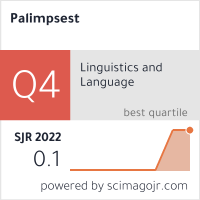LANGUAGE AS AN IDENTITY TOOL: THE INFLUENCE OF LINGUISTIC CHOICES ON THE TRANSMISSION OF GENDER STEREOTYPES
DOI:
https://doi.org/10.46763/PALIM22714015rAbstract
Since ancient times women have been considered as derivative of men or subordinate to them. This cultural vision impacts the Italian language and its use by people to talk about women. In addition, some sociolinguistics studies have shown that common speakers have expectations on how women and men, women especially, should express themselves in spoken and written language. This paper deals with the ways in which linguistics choices of speakers referring to women. Sometimes linguistics choices include women in the generic use of masculine, others time this doesn’t happen, and women are mentioned apart. We will start from the Raccomandazioni of Alma Sabatini and then we will present some studies that have been proposed following her proposals and her thoughts. In the second part of the article, we will show the correlation between linguistics choices and the paradigms suggested in many books for the Primary School. The aim of this paper is to demonstrate how the morphological level of the language can transmit gender stereotypes.
Keywords: gender; stereotypes; linguistic sexism; generic use of masculine; role names.


